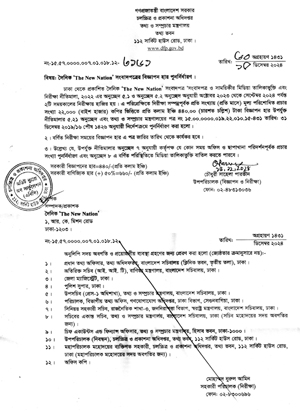The recent developments in Bangladesh’s foreign exchange market reveal a complex interplay between regulatory intent and market realities.
While the Bangladesh Bank has ostensibly embraced a more flexible exchange rate regime, the imposition of an unofficial mid-rate has created confusion and frustration among bankers and economists alike.
As per a newspaper report, this situation raises critical questions about the efficacy of the central bank’s approach and its implications for the economy.
The shift from a crawling peg to a more flexible exchange rate, prompted by the International Monetary Fund, was initially seen as a step towards liberalisation.
However, the central bank’s insistence on maintaining a benchmark rate undermines the very essence of this reform.
Bankers argue that this mid-rate acts as a constraint, stifling genuine negotiation and market dynamics.
The result is a forex market that feels anything but free, with discrepancies between official rates and actual market conditions leading to a burgeoning shadow economy.
The impact of these restrictions is particularly concerning for remittances, a vital pillar of Bangladesh’s foreign exchange reserves. Despite achieving a record $2.64 billion in remittances in December, the early signs of January suggest a troubling decline, as strict controls on dollar rates deter inflows.
The central bank’s attempts to prioritise state-owned banks for dollar sales may further destabilise the market, pushing remittance flows into informal channels and exacerbating the very issues it seeks to address.
Economists advocate for a free-floating exchange rate, arguing that market forces should dictate currency values.
This approach would reduce the gap between official and unofficial rates and enhance the attractiveness of formal remittance channels.
The current system, characterised by rigid controls and a lack of transparency, risks alienating remitters and undermining the economy’s stability.
As Bangladesh navigates these turbulent waters, the central bank must reconsider its strategy.
A commitment to genuine market liberalisation and robust monitoring to prevent abuse is essential for fostering a healthy forex environment.
Only then can Bangladesh harness the full potential of its remittance inflows and ensure a stable economic future.



